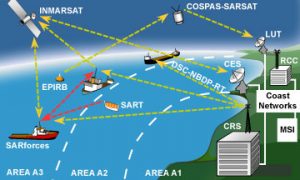The traditional satellite-based connectivity available to crew members and passengers on-board sailing vessels fails to cater for today’s user’s needs. People are equipped with powerful mobile devices and thus expect ubiquitous connectivity. Terrestrial solutions for long range wireless communication can potentially be employed in extending Internet connectivity to seaborne vessels. The potential applications of such service are business (e.g. map updates, sensor readings) and leisure related (e.g. photos, videos) and can create large volumes of data the transfer of which is not viable over satellite.
The harsh sea environment, continuous vessel mobility and large distances between vessels are some of the challenges faced in developing maritime networks. We operate our own Automatic Identification System (AIS) station gathering actual vessel mobility data that allows us to realistically evaluate our proposed solutions. We base our work on Delay Tolerant Networking (DTN) concepts to facilitate data transfers between vessels and shore-based stations. We also investigate the provisioning of real-time Voice-over-IP services when connectivity opportunities arise.

Indicative Publications
(1) L. Lambrinos, C. Djouvas and Ch. Chrysostomou, “Applying delay tolerant networking routing algorithms in maritime communications”, in AOC Workshop (WoWMoM), Madrid, June 2013
(2) L. Lambrinos, P. Kolios and C. Djouvas, “Dimensioning VoIP capacity in maritime networks”, in ICC Conference, Budapest, June 2013
